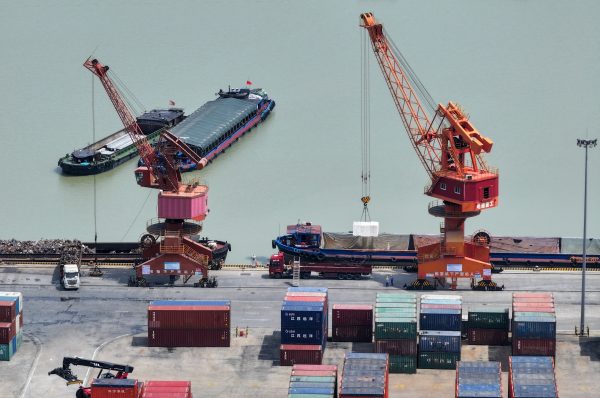As the world’s largest bilateral lender, China faces challenges in dealing with the debt distress of some of its borrowers under the Belt and Road Initiative (BRI). Whether China can support those debtors and avoid trapping itself in unpaid debts will depend on its policy choices.
China’s BRI has provoked criticism from parts of the Western world. The United States remains concerned that China’s rise will undermine its values and interests. The alleged lack of transparency and expensive lending terms of the BRI have been central issues. A ‘debt trap diplomacy’ narrative persists in the media and certain policy circles despite recent research showing this is an unfounded myth. There are no winners in a debt trap strategy, as the debtor, trapped with unsustainable debt, leaves its creditor out of pocket.
The fundamental challenge of sovereign debt in the developing world is not China, but rather how to deal equitably with unsustainable debt owed to various creditors when the creditor composition varies from country to country. Bangladesh owes 53 per cent of its external public debt to multilateral creditors and only 7 per cent to China. Sri Lanka owes 35 per cent to international bondholders, while Laos owes 49 per cent to China alone.
Understanding the claims to a debtor is critical for successfully restructuring debt when it becomes unsustainable. This is the case for some Asian nations, with Sri Lanka declaring suspension of its debt payment in April 2022 and Laos remaining in debt distress.
Policymakers must avoid repeating the same mistake of procrastinating due to their optimism bias. Since the 1970s, a series of debt restructuring for developing countries has resulted in debt forgiveness for many heavily indebted poor countries. This history of debt relief under the sovereign debt governance mechanism over the past five decades may shed light on how to better address the current debt woes.
The Paris Club, an informal yet established forum of mostly advanced Western nations, has coordinated resolution of debt distress in developing countries since 1956. The number of debt treatments under the Paris Club started to increase in the 1980s following a period of debt accumulation amid the petrodollar recycling boom in the late 1970s. Newly independent nation-states since the 1960s, mainly in Africa, also accumulated debt. A series of debt crises then began in Latin America and spread worldwide, until finally subsiding in the late 1990s.
During this era of debt crises, Paris Club creditors addressed the unimproved debt servicing prospects of heavily indebted poor countries. They eventually realised protracted rescheduling was due to solvency, not liquidity, problems. Since 1988, the Paris Club has introduced various debt treatment terms involving debt cancellation. The Heavily Indebted Poor Countries (HIPC) Initiative allows up to 100 per cent debt forgiveness, while the Multilateral Debt Relief Initiative (MDRI) enables a complete cancelation of multilateral debt at the shareholders’ expense, despite multilateral creditors conventionally being granted the de facto preferred creditor status.
At the onset of the COVID-19 pandemic, Paris Club creditors and the G20 agreed to implement the Debt Service Suspension Initiative. This was followed by the G20 Common Framework for Debt Treatments in November 2020.
As a G20 member, China has agreed to basic principles in the Common Framework, such as conducting joint creditors’ negotiation ‘in an open and transparent matter’ and ‘comparability of treatment’, which encourages ‘fair burden sharing among all official bilateral creditors’ and private creditors. Yet some critics of the Common Framework claim there is not enough in common between China and other official creditors in financial terms for the framework to be effective.
China has lowered its lending since 2017 to address the debt overhang but some countries’ stock of outstanding debt owed to China remains high and will require China to take debt relief action.
China has been offering bailouts to BRI borrowers in debt distress while scaling down its lending. But its bailout approach typically seeks to simply prevent immediate default through payment term extension for low-income countries and new money for middle-income countries. This remedial approach without debt relief does not resolve the solvency problem, paralleling Paris Club creditors’ procrastination prior to adopting debt forgiveness in the 1990s.
In alignment with joint action and fair burden-sharing principles, China insists on multilateral creditors’ participation in debt treatment, as well as their mobilisation of ‘new and additional concessional resources’.
China’s current economic and financial woes, which includes significant domestic debt distress, may explain its reluctance to provide debt relief out of fear of creating moral hazard domestically as well as its insistence on multilateral creditors’ debt relief and new money injection. Yet new multilateral lending can be a double-edged sword even on concessional terms, as non-reschedulable multilateral debt can be forgiven only at the shareholder countries’ expense.
Past debt crises give China a lesson to consider upfront debt treatment for countries with unsustainable debt burdens, especially those disproportionately owed to China. It is worth considering the debt reduction in net present value terms. Another option could be a climate-centric approach such as debt-for-climate swaps, especially if China commits to promoting a green BRI.
China should release itself at an early stage from the risk of being debt-trapped. Otherwise, it may make the same mistake that Western creditors made and eventually lose its financial claims.
Toshiro Nishizawa is Professor at the Graduate School of Public Policy, University of Tokyo.

